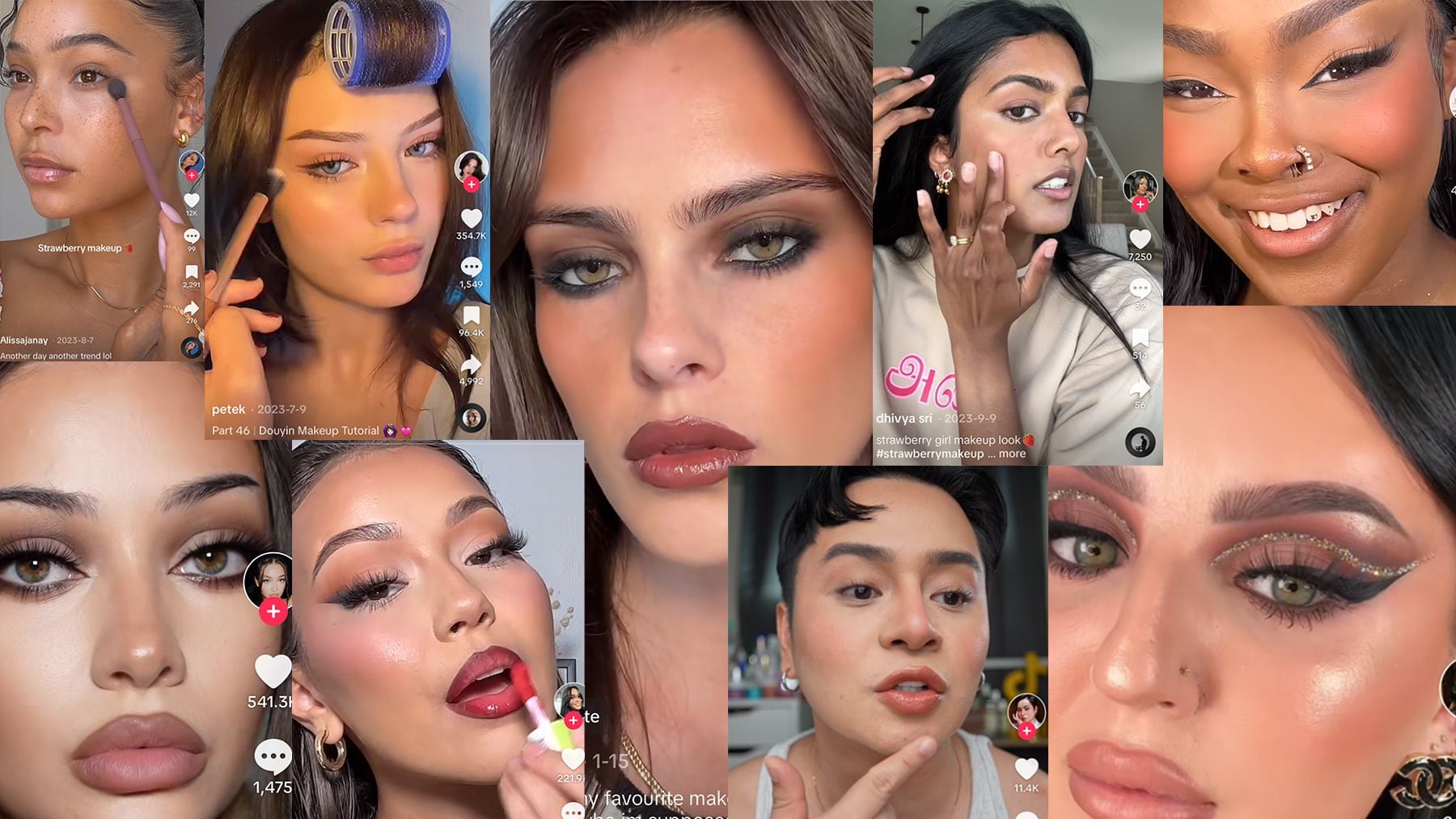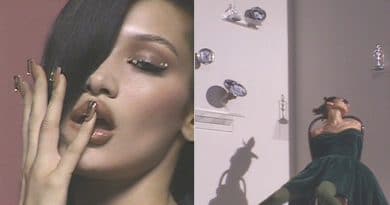What Blink-And-You’ll-Miss-It Beauty Trends Mean in the Long Term
What do tomatoes, Hershey’s chocolate syrup and Edie Falco’s character on “The Sopranos” have in common?
They’ve all been cited as inspiration for beauty trends — “tomato girl” makeup, a heavily-blushed freckled face; glossy brunette “chocolate syrup” hair and the “mob wife” look, which includes sultry eyes and plenty of lip liner — that have recently taken off on TikTok.
Since the platform exploded during the pandemic, TikTok has forever changed the trend cycle, particularly in beauty. Today, cleverly named, at-times outlandish looks can quickly rise — and fall — from the centre of conversation. But while their impact may be short-lived, TikTok trends’ impact on the industry at large is enormous. Consumers can immediately start recreating trends with products they already have at home, but depending on whatever’s “in” at any given moment, different products can see a sales bump or slump. 2023′s popular “clean girl” makeup look, for example, often eschews foundation in favour of light concealer.
For beauty brands, the endless churn of TikTok trends also provides ample opportunity to engage in the cultural conversation, whether it’s through marketing on social media or selecting what products to highlight in-store. But it’s up to brands to decipher which trends are worth paying attention to.
“It’s an exciting way for people to interpret the direction that makeup is going, but in a way that’s incredibly relatable,” said Cat Quinn, executive director of trend at Mac Cosmetics.
Capitalising on The Trend Cycle
While being able to have a red-hot, viral product may be somewhat down to luck, brands with wide product assortments and flexible formulas will be at an advantage, said Cierra Sherwin, a product developer who has worked with Glossier and Bobbi Brown.
“You always want to maintain a lens of products that allow for manipulation … [things that you can] sheer out, or build up for example,” she said. “[Brands need to] create that nuance.”
That doesn’t mean trying to be all things to all consumers, and brands don’t need to attempt every single trend. Instead, Sherwin said brands need to be clear about what lane they want to play in, and not lose focus on their core products. Everyday essentials like lip liner and lip gloss, for example, are not going away, she added.
But if a trend really resonates with a brand’s core ethos, or is a natural fit for a hero product, brands should be vocal about it, said Lisa Payne, head of beauty at trends agency Stylus. That can be done by publishing social media content themed to a particular trend, but could even be employed in stores through new signage or re-merchandising.
But brands need to be aware of their own limitations — they’re not the tastemakers. Rather than working to create trends, they should be looking out for them. Once executives have identified a trend that makes sense for their label, then focus on identifying the influencers or figures who are popularising it and connect with them. A hot trend can also boost an influencer: Hailey Bieber’s ascendance to the influencer A-list went hand-in-hand with her popularisation of her “glazed donut” look.
The lightning-fast pace of TikTok can make it difficult to create new products in response to trends — by the time the product in question is on store shelves, the internet may have moved on. Instead, brands can iterate on existing items. Sherwin pointed to the example of Rhode, already known for its peptide lip treatment product, which introduced a strawberry glazed doughnut-flavoured version in collaboration with Krispy Kreme, a nod to the “glazed donut” trend Bieber helped start.
“Just getting the products into the hands of people who are going to play with these trends [makes them] more relevant,” said Payne.
Spotting Staying Power
Spotting trends early will also give beauty brands a leg up that can help in planning these responses — the sooner you notice a trend, the more quickly you can react to it. To be on the lookout, Sherwin suggests paying attention to what people are talking about on TikTok, but also what’s happening in culture at large. Quinn said she sees the mob wife trend, for example, as a pushback to more muted trends that proliferated last year.
“I think a lot of consumers feel that they’ve been doing minimalism and ‘quiet luxury’ for so long,” said Quinn. “They want makeup, and they want theatre.”
Her advice to brands? Not getting too hung up on a trend’s quirky name — instead, look at what sort of beauty looks that name represents. Mob wife, for example, is not so much about a desire to truly take style cues from the mafia, but to create a “feeling of badassery,” said Payne.
Many of these flash trends are not tied to a new technique or product, and some even overlap with one another — 2023′s “strawberry girl” and “tomato girl” are nearly identical, for instance. And even if a trend is linked to a pop culture moment, like the debut of a new TV show or film, it can evolve beyond the original reference.
Many trends are just reworks of something we’ve seen before. “Latte makeup,” for instance, a matte brown smokey eye, has cycled in and out of style since the 1990s. The more trends that share the same visual facets, the more likely those core themes will stick around.
“There’s something quite addictive for the TikTok generation to jump on something from the past and give it a new name,” said Payne.
Taking a nuanced view will also serve brands well, especially as various consumer demographics interpret trends very differently. Experts say, a wise tactic for brand leaders is to think about how a certain trend will land in various geographies or among different age groups.
Ultimately, it comes down to maintaining a product strategy that allows for both viral moments and everyday workhorses. Beyond that, brands should look for the wider meaning in these small moments.
“[Ask] what your customers are going to take from [this moment], how will they apply it to their lives?,” said Payne. “And how can brands use that to their commercial betterment?”


